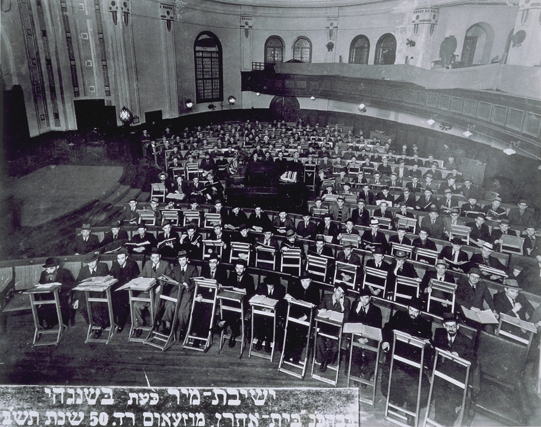|
Levenstein
Levenstein, Levenshtein is a surname. Notable people with the surname include: * Jim Levenstein, a fictional character in the ''American Pie'' film series * Matvey Levenstein (born 1960), Russian-American painter * Vladimir Levenshtein (1935-2017), Russian scientist ** Levenshtein distance, a metric for comparing two strings or words ** Levenshtein coding, a binary number coding * Yechezkel Levenstein, Mashgiach in the Yeshivas Mir and in Ponovezh, known as Reb Chatzkel See also * Löwenstein (other) {{surname, Levens(h)tein Jewish surnames Levite surnames Yiddish-language surnames ... [...More Info...] [...Related Items...] OR: [Wikipedia] [Google] [Baidu] |
Jim Levenstein
This is a list of characters from the film series '' American Pie'' consisting of '' American Pie'' (1999), ''American Pie 2'' (2001), ''American Wedding'' (2003), '' American Pie Presents: Band Camp'' (2005), '' American Pie Presents: The Naked Mile'' (2006), '' American Pie Presents: Beta House'' (2007), '' American Pie Presents: The Book of Love'' (2009), ''American Reunion'' (2012), and '' American Pie Presents: Girls' Rules'' (2020). Noah Levenstein, played by Eugene Levy, has appeared in eight of the nine released films. Biggs, Hannigan, Scott, Nicholas, Thomas, Coolidge, Cho, Isfield, Cheek, and Owen all play their characters in four films each; other characters appear in fewer films. Characters from '' American Pie'' Noah Levenstein Noah Levenstein, also known as "Jim's Dad", has appeared in eight of the nine films to date, being absent only in ''American Pie Presents: Girl's Rules''. At the 2000 American Comedy Award, Levy was nominated for Funniest Supporting Actor ... [...More Info...] [...Related Items...] OR: [Wikipedia] [Google] [Baidu] |
Matvey Levenstein
Matvey Levenstein (born 1960) is a Russian-American painter best known for his oil on copper, wood, and linen; and sumi ink on paper depictions of landscapes and interior/still lifes that explore themes of history and representation. Invoking the intersection at which avant-garde cinema meets the tradition of European painting, Levenstein's work explores and embodies the object-image relationship. Life and education Levenstein was born in 1960 in Moscow, U.S.S.R. He attended the Moscow Architectural Institute before immigrating to the United States from the Soviet Union as a political refugee as part of Jewish immigration in 1980. He has a B.F.A. from the Art Institute of Chicago, and received his M.F.A. from the Yale School of Art. He lives and works in New York City. Career Levenstein is represented by Kasmin Gallery (New York) and Galleria Lorcan O'Neill (Rome, Italy). His work was presented in solo exhibitions at Kasmin in 2019 and 2021, and at Galleria Lorcan O'Neil ... [...More Info...] [...Related Items...] OR: [Wikipedia] [Google] [Baidu] |
Yechezkel Levenstein
Rabbi Yechezkel Levenstein (Rav Yechezkel HaLevi Levenstein), known as Reb Chatzkel, (1885 – 18 Adar 1974), was the mashgiach ruchani of the Mir yeshiva, in Mir, Belarus and during the yeshiva's flight to Lithuania and on to Shanghai due to the invasion of Poland by Nazi Germany in World War II. He was a leader of several yeshivas in Europe, America, and Israel, and raised several generations of Torah-observant Jewry. He was a disciple of R' Nachum Zev Ziv son of R' Simcha Zissel Ziv. Biography Rabbi Levenstein was born in Warsaw (5656) His mother, Zlota, died when he was just five years old; his father, Reb Yehuda, subsequently remarried. He studied for years in the yeshiva in Łomża, where he was imbued with mussar, then in Raduń Yeshiva under the Chofetz Chaim and the famous mashgiach Rav Yeruchom Levovitz, and finally in Kelm. His rebbetzin, Chaya, was an orphan. He had "rejected glowing offers made to him by wealthy men who wanted him for their daughters" saying t ... [...More Info...] [...Related Items...] OR: [Wikipedia] [Google] [Baidu] |
Vladimir Levenshtein
Vladimir Iosifovich Levenshtein ( rus, Влади́мир Ио́сифович Левенште́йн, p=vlɐˈdʲimʲɪr ɨˈosʲɪfəvʲɪtɕ lʲɪvʲɪnˈʂtʲejn, a=Ru-Vladimir Iosifovich Levenstein.oga; 20 May 1935 – 6 September 2017) was a Russian scientist who did research in information theory, error-correcting codes, and combinatorial design. Among other contributions, he is known for the Levenshtein distance and a Levenshtein algorithm, which he developed in 1965. He graduated from the ''Department of Mathematics and Mechanics'' of Moscow State University in 1958 and worked at the Keldysh Institute of Applied Mathematics in Moscow ever since. He was a fellow of the IEEE Information Theory Society. He received the IEEE Richard W. Hamming Medal in 2006, for "contributions to the theory of error-correcting codes and information theory, including the Levenshtein distance". Life Levenshtein graduated from Moscow State University in 1958, where he studied in the faculty ... [...More Info...] [...Related Items...] OR: [Wikipedia] [Google] [Baidu] |
Levenshtein Coding
Levenshtein coding is a universal code encoding the non-negative integers developed by Vladimir Levenshtein. Encoding The code of zero is "0"; to code a positive number: #Initialize the step count variable ''C'' to 1. #Write the binary representation of the number without the leading "1" to the beginning of the code. #Let ''M'' be the number of bits written in step 2. #If ''M'' is not 0, increment ''C'', repeat from step 2 with M as the new number. #Write ''C'' "1" bits and a "0" to the beginning of the code. The code begins: To decode a Levenshtein-coded integer: #Count the number of "1" bits until a "0" is encountered. #If the count is zero, the value is zero, otherwise #Start with a variable ''N'', set it to a value of 1 and repeat ''count minus 1'' times: #Read ''N'' bits, prepend "1", assign the resulting value to ''N'' The Levenshtein code of a positive integer is always one bit longer than the Elias omega code of that integer. However, there is a Levenshtein cod ... [...More Info...] [...Related Items...] OR: [Wikipedia] [Google] [Baidu] |
Löwenstein (other) , a historic commercial structur ...
Lowenstein or Loewenstein (german: Löwenstein, link=no) may refer to: * Lowenstein (surname), including a list of people with the name * Löwenstein, a city in Baden-Württemberg, Germany. * Löwenstein-Wertheim, former state of the Holy Roman Empire * Alfred Lowenstein, Investor, Financer * Loewenstein Peak, an ice-free peak located in the Cruzen Range of Victoria Land * 23298 Loewenstein, a minor planet See also * Levenstein, a surname * Lewenstein, a surname * Lowenstein Sandler, a New Jersey law firm * Löwenstein–Jensen medium, a growth medium more commonly known as LJ medium * Loewenstein's blue, a species of butterfly in the family Lycaenidae * Loewenstein and Sons Hardware Building Loewenstein and Sons Hardware Building, also known as the Loewenstein Building or Rite Aid Building, is a historic commercial structure located at Charleston, West Virginia. It was designed by the Columbus, Ohio architectural firm of Yost & Packa ... [...More Info...] [...Related Items...] OR: [Wikipedia] [Google] [Baidu] |
Levenshtein Distance
In information theory, linguistics, and computer science, the Levenshtein distance is a string metric for measuring the difference between two sequences. Informally, the Levenshtein distance between two words is the minimum number of single-character edits (insertions, deletions or substitutions) required to change one word into the other. It is named after the Soviet mathematician Vladimir Levenshtein, who considered this distance in 1965. Levenshtein distance may also be referred to as ''edit distance'', although that term may also denote a larger family of distance metrics known collectively as edit distance. It is closely related to pairwise string alignments. Definition The Levenshtein distance between two strings a, b (of length , a, and , b, respectively) is given by \operatorname(a, b) where : \operatorname(a, b) = \begin , a, & \text , b, = 0, \\ , b, & \text , a, = 0, \\ \operatorname\big(\operatorname(a),\operatorname(b)\big) & \text a = b \\ 1 + \min ... [...More Info...] [...Related Items...] OR: [Wikipedia] [Google] [Baidu] |
Jewish Surnames
Jewish surnames are family names used by Jews and those of Jewish origin. Jewish surnames are thought to be of comparatively recent origin; the first known Jewish family names date to the Middle Ages, in the 10th and 11th centuries CE. Jews have some of the largest varieties of surnames among any ethnic group, owing to the geographically diverse Jewish diaspora, as well as cultural assimilation and the recent trend toward Hebraization of surnames. Some traditional surnames relate to Jewish history or roles within the religion, such as Cohen ("priest"), Levi, Shulman ("synagogue-man"), Sofer ("scribe"), or Kantor ("cantor"), while many others relate to a secular occupation or place names. The majority of Jewish surnames used today developed in the past three hundred years. History Historically, Jews used Hebrew patronymic names. In the Jewish patronymic system the first name is followed by either ''ben-'' or ''bat-'' ("son of" and "daughter of," respectively), and then the ... [...More Info...] [...Related Items...] OR: [Wikipedia] [Google] [Baidu] |
Levite Surnames
Levites (or Levi) (, he, ''Lǝvīyyīm'') are Jewish males who claim patrilineal descent from the Tribe of Levi. The Tribe of Levi descended from Levi, the third son of Jacob and Leah. The surname ''Halevi'', which consists of the Hebrew definite article "" ''Ha-'' ("the") plus ''Levi'' (Levite) is not conclusive regarding being a Levite; a titular use of HaLevi indicates being a Levite. The daughter of a Levite is a " ''Bat Levi''" (''Bat'' being Hebrew for "daughter"). The Tribe of Levi served particular religious duties for the Israelites and had political (administering cities of refuge) and educational responsibilities as well. In return, the landed tribes were expected to support the Levites with a tithe (), particularly the tithe known as the First tithe, ''ma'aser rishon''. The Kohanim, a subset of the Levites, were the priests, who performed the work of holiness in the Temple. The Levites, referring to those who were not Kohanim, were specifically assigned to * sing ... [...More Info...] [...Related Items...] OR: [Wikipedia] [Google] [Baidu] |


